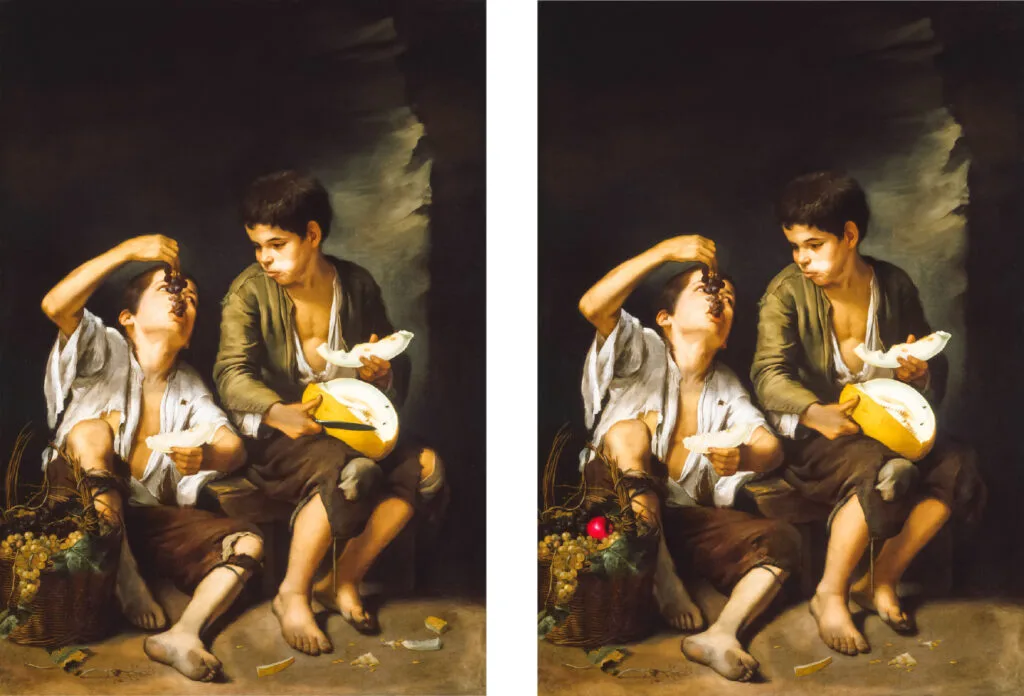Table of Contents
An in-depth exploration of the enduring charm, benefits, and evolution of one of the world’s most beloved visual puzzles.
What Is Spot the Difference?
Spot the Difference is a type of visual puzzle that challenges the player to compare two nearly identical images and identify subtle differences between them. These puzzles test visual perception, attention to detail, and memory, offering entertainment that ranges from relaxing to mentally invigorating.
You might find a tree missing its leaves in one image, a window colored differently, or a character’s expression slightly changed. These seemingly small alterations engage the mind in powerful ways—and that’s part of what makes them so universally appealing.
A Timeless Puzzle for All Ages
From preschoolers spotting changed colors to seniors revisiting nostalgic illustrations, Spot the Difference games are popular across generations. They are language-free, easy to grasp, and endlessly adaptable in complexity, making them ideal for both individual and shared play.
Children enjoy the bright colors and whimsical themes; adults and seniors appreciate the layered challenge and quiet focus the game offers. Whether on a printed page or a digital screen, the format invites users to slow down, observe, and engage.
Why It Stands the Test of Time
Part of the puzzle’s timelessness lies in its simplicity. There are no complex rules. No math. No required vocabulary. Just look, think, and mark. It offers:
- Inclusive gameplay for all ages and abilities
- Instant engagement without instruction
- Natural scalability (from 3 to 10+ differences)
- Endless variety of themes, styles, and formats
This adaptability is why Spot the Difference has appeared in everything from Sunday newspapers and classroom handouts to digital flipbooks and mobile apps.
Popular Puzzle Types
There are multiple ways Spot the Difference can be delivered, beyond just side-by-side image comparison. Here are the most popular formats:
- Traditional side-by-side puzzles: Two images shown side by side, usually with 3–10 differences.
- Find the odd one out: One image among a group that’s subtly different.
- Hidden object puzzles: Similar in spirit, players must locate items that aren’t immediately visible.
- Sequential puzzles: Differences appear as a story unfolds (ideal for print or flipbook series).
Each type can be tailored to different age groups, attention spans, or learning goals.
Matching Puzzle Types to Age Groups
Each stage of life brings its own cognitive strengths and preferences. Spot the Difference puzzles adapt beautifully to these shifts:
- Toddlers (2–4): Use bold colors, large simple shapes, and 3 clear differences.
- Young Children (5–7): Add playful themes like animals, fairy tales, and basic storylines.
- Preteens (8–12): Increase subtlety and variety with semi-realistic or fantasy-based illustrations.
- Teenagers (13–18): Integrate pop culture, memes, and realistic or anime art styles.
- Spot the difference for Adults (18–60): Emphasize art, travel, architecture, and logic-based differences.
- Spot the difference for Seniors (60+): Offer nostalgic, calming, and slower-paced challenges with medium visibility.
Spot the difference puzzles boost brainpower at every age. The key is tailoring the number of differences, visual complexity, and theme to the player’s ability and interest.
Real Benefits: Cognitive, Emotional & Social
Far more than a simple pastime, Spot the Difference puzzles deliver surprising benefits:
Cognitive Benefits
- Enhances focus and sustained attention
- Improves short-term memory through visual recall
- Supports pattern recognition and spatial awareness
- Strengthens executive function, especially in children and seniors
Emotional & Psychological Benefits
- Reduces stress by promoting mindfulness
- Boosts confidence with small, achievable goals
- Supports emotional regulation by offering quiet engagement
Educational & Social Benefits
- Encourages cooperative learning in classrooms or family settings
- Teaches visual literacy, storytelling, and language development in young learners
- Acts as memory and cognition therapy for older adults
Creating Your Own Puzzle: A DIY Invitation
Designing a Spot the Difference puzzle is easier than it seems—and endlessly fun. Here’s how to get started:
- Choose your base image: Use a photo, artwork, or illustration.
- Duplicate the image: Make a copy to preserve the original.
- Alter 3–10 elements: Change colors, remove objects, flip details, or reposition features.
- Decide on format: Will this be printed, emailed, used in a slide, or uploaded to a website?
Tools: Free apps like Canva, Paint.NET, or PowerPoint work well. For advanced creation, Photoshop offers powerful control.
Tips:
- Make changes subtle but fair
- Test on someone before publishing
- Avoid overly dark or cluttered visuals
The Digital Revolution: Puzzles for the Modern Age
In an era of screens, Spot the Difference has found new life:
- Apps offer interactive play with zoom, timers, and hints
- Web platforms host community puzzles or multiplayer competitions
- Digital flipbooks (like those from Classic Art Puzzles) combine the beauty of print with the ease of access
- Interactive whiteboards in classrooms make puzzle-solving a group activity
At Classic Art Puzzles, our digital flipbooks bridge the gap between nostalgia and innovation—designed especially for older adults and educators who want interactive puzzles without app fatigue.
Why Visual Puzzles Beat Numbers and Words
Unlike crosswords or Sudoku, Spot the Difference relies on seeing rather than knowing. That’s why visual puzzles have wider accessibility:
- No need for language fluency or math skills
- Easy to translate across cultures
- More welcoming to those with dyslexia or number anxiety
They also exercise a different part of the brain, making them great complementary activities for cognitive health.
Puzzles in the Classroom
Teachers love Spot the Difference puzzles for their versatility:
- Use them as warm-ups, brain breaks, or visual literacy tools
- Build storytelling lessons around the images
- Teach sequencing, comparison, and vocabulary
They work well for:
- Early readers
- ESL students
- Visual learners
- Special education classrooms
Best of all, students see them as games rather than assignments.
Who Are These Puzzles For?
Almost everyone can benefit from visual puzzles, but different audiences appreciate them differently:
Great for:
- Seniors managing cognitive change
- Children building attention and visual skills
- ESL learners
- Therapists seeking low-stress engagement
Less suited for:
- Users with significant visual impairment (unless adapted)
- People who prefer fast-paced, highly dynamic activities
Gentle Tools for Special Needs
Spot the Difference puzzles can be adapted beautifully for neurodivergent individuals and those with cognitive impairments:
- Autism: Supports focus, patterning, and nonverbal learning
- Dementia (early to mid-stage): Reinforces memory and detail recognition without frustration
- ADHD: Offers structure and sustained attention without sensory overload
Use high-contrast images, minimal distractions, and limited color shifts for accessibility.
Creative Delivery Formats
The puzzle is only as good as its delivery. Some of the most effective formats include:
- Lay-flat printed books
- Interactive flipbooks (our specialty)
- Greeting cards, posters, or calendars
- Projection screens or whiteboards for classrooms
- Apps or browser-based games
These variations allow puzzles to be tailored for travel, therapy, events, or relaxation at home.
Trusted Resources to Explore
There are many excellent platforms offering free or paid Spot the Difference puzzles:
- Classic Art Puzzles
- Poki.com: Interactive browser play
- PrintItFree.net: Free printable puzzles
- TeachersPayTeachers: Classroom-ready content
- App stores: Free apps for all levels
Each serves a different purpose. Use printables for class, apps for solo play, and flipbooks for a beautiful, screen-friendly experience.
Final Thoughts
Spot the Difference is more than a nostalgic activity or a classroom filler. It’s a thoughtful, flexible, and engaging puzzle format that can be shaped for almost any purpose. From early learning to eldercare, solo play to shared moments, the magic lies in its simplicity.
And in a world that moves ever faster, Spot the Difference reminds us to pause, notice, and look again.
Play a Puzzle
Find 5 Differences in the below image featuring: Children Eating Grapes and a Melon

Play More? 6 Free Printable Spot the Difference Games with Solutions



